AI Image Model Comparison: GPT-4o, Nano Banana, Flux Kontext, MidJourney, Seedream, and Qwen
AI image models are evolving quickly — from creative generation to precise visual editing.
In this comparison, we evaluate GPT-4o, Nano Banana, Flux Kontext, MidJourney, Seedream, and Qwen on two critical fronts:
- Text to Image: generating visuals purely from prompts.
- Image to Image: editing and replacing elements with precision.
Our goal is to understand how each performs in realistic design workflows — from interior visualization to product rendering — and to highlight Nano Banana’s unmatched accuracy in intelligent local editing.
🧩 Test Setup
| Category | Mode | Goal | Prompt Example |
|---|---|---|---|
| 1. Interior Design Visualization | Text to Image | Assess composition, spatial logic, and realism. | “A cozy mid-century modern living room with walnut furniture, soft lighting, and a grey fabric sofa. Add subtle decor details and natural window light.” |
| Image to Image | Test precision editing and style control. | “Replace the sofa in this room with a green mid-century sectional. Keep the lighting and perspective consistent.” | |
| 2. Product Design Rendering | Text to Image | Evaluate product realism and material rendering. | “A sleek wireless earbud design on a reflective surface, photographed with a soft studio light setup, minimalistic style.” |
| Image to Image | Test fine-tuning on detail preservation. | “Change the material of this earbud from plastic to brushed aluminum without altering its shape.” | |
| 3. Character / Portrait Creative Editing | Text to Image | Test human composition accuracy and aesthetics. | “Portrait of a female designer in a studio with creative sketches on the wall, cinematic lighting, shallow depth of field.” |
| Image to Image | Evaluate localized control and realistic blending. | “Change the model’s outfit to a beige trench coat while keeping the lighting and pose identical.” | |
| 4. Marketing / Visual Storytelling Composition | Text to Image | Assess layout, typography balance, and realism. | “A minimalist advertisement poster for a travel bag, with clean background and product centered in frame.” |
| Image to Image | Evaluate consistency in contextual changes. | “Change the bag's fabric to a woven leather texture, and keep everything else unchanged.” |
🧠 Models in Comparison
GPT-4o
OpenAI’s multimodal model, capable of generating and editing images through text instructions. It provides balanced performance and stable image-to-text alignment but sometimes struggles with precise localized edits.
Nano Banana (Banana Designer)
Built on Google’s Nano Banana AI model, Banana Designer fine-tunes it for professional creative workflows — delivering unmatched local editing precision and style coherence.
It excels at replacing, adjusting, and painting context-aware details intelligently, instead of merely inpainting or blending pixels.
Flux Kontext
A model optimized for contextual image understanding, Flux Kontext performs well in reference-driven editing and visual storytelling. It handles scene consistency competently, but occasionally softens fine detail when working on tight masks.
MidJourney
Known for artistic creativity and style richness. MidJourney shines in concept generation and stylized rendering, though it lacks precision control in element replacement and can struggle with maintaining spatial realism during edits.
Seedream
A newer model focused on high-quality image generation and editing. Seedream demonstrates strong performance in targeted editing with precise changes, coming very close to Nano Banana's quality in many scenarios. It excels at maintaining detail consistency while executing specific modifications.
Qwen
Developed by Alibaba, Qwen is a multimodal AI model capable of image generation and editing. While it shows promise in text-to-image generation, it struggles with precise instruction following in image editing tasks, particularly in color changes and material modifications.
🧩 1. Interior Design Visualization
Goal: Compare spatial understanding and object replacement precision.
| Interior |
|---|
| GPT-4o |
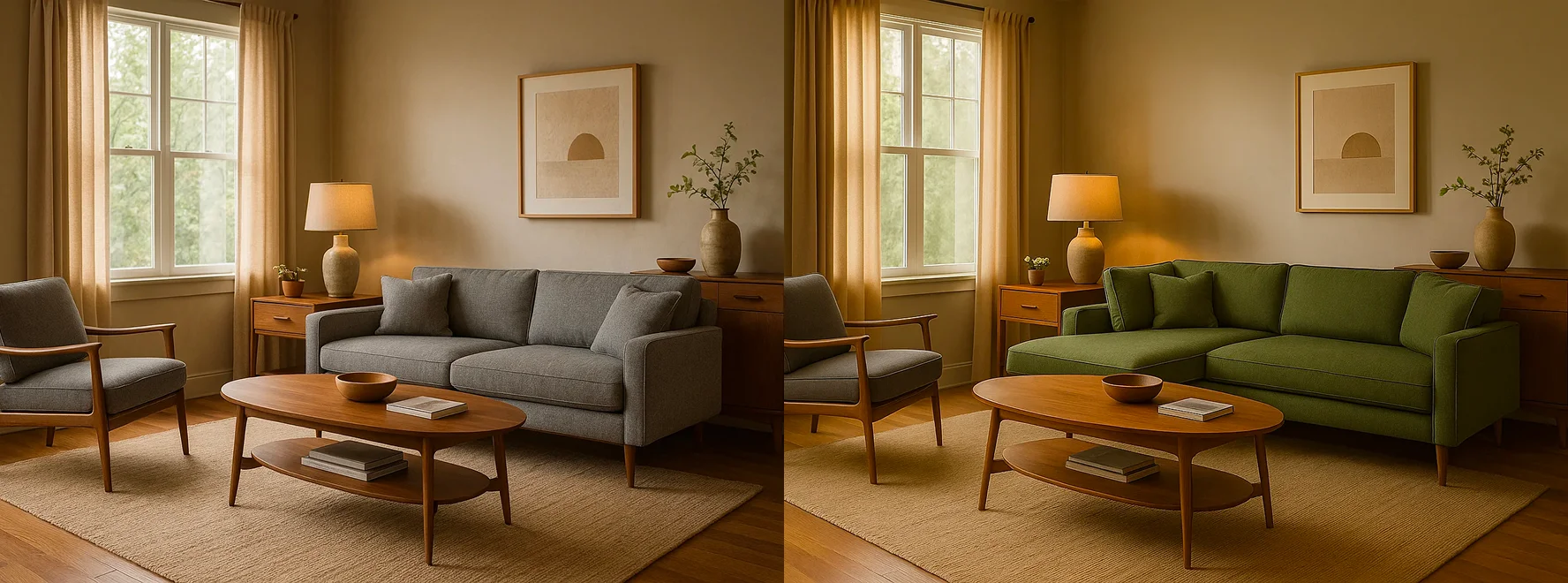 |
| A fine text to image generation result, only that GPT-4o adds too much yellow to images, which is also a visible feature in other generations below. The editing is fair, but you can still see objects being slightly modified. |
| Nano Banana |
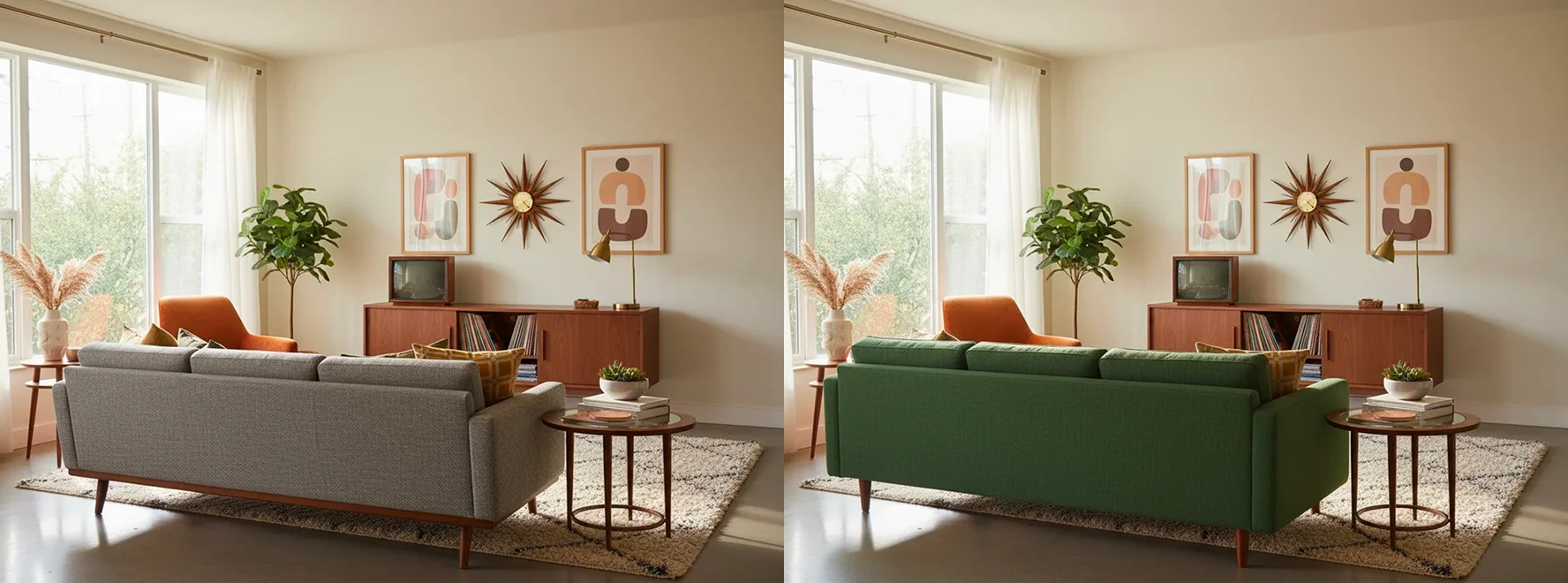 |
| Both text to image generation and image editing are the best quality without much to comment on. |
| Flux Kontext |
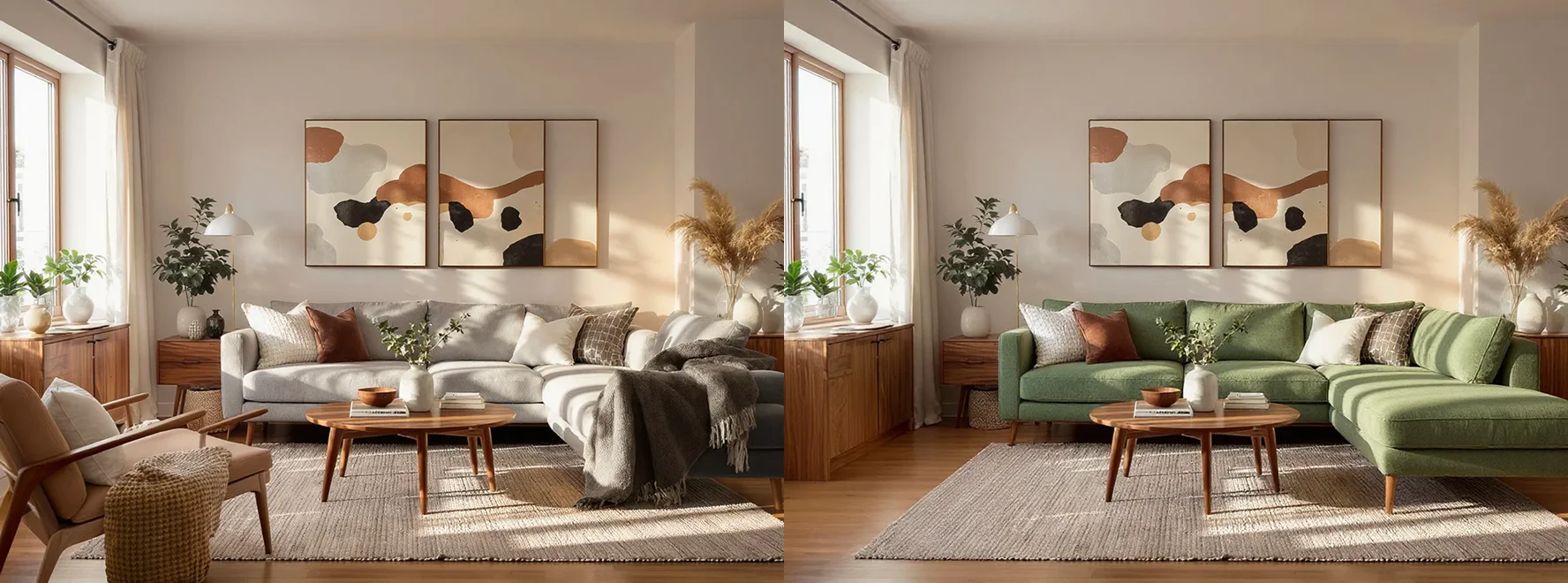 |
| Very close to the best, the text to image generation produces a even richer look than Nano Banana, however, when editing, the arm chair got removed accidentally. |
| MidJourney |
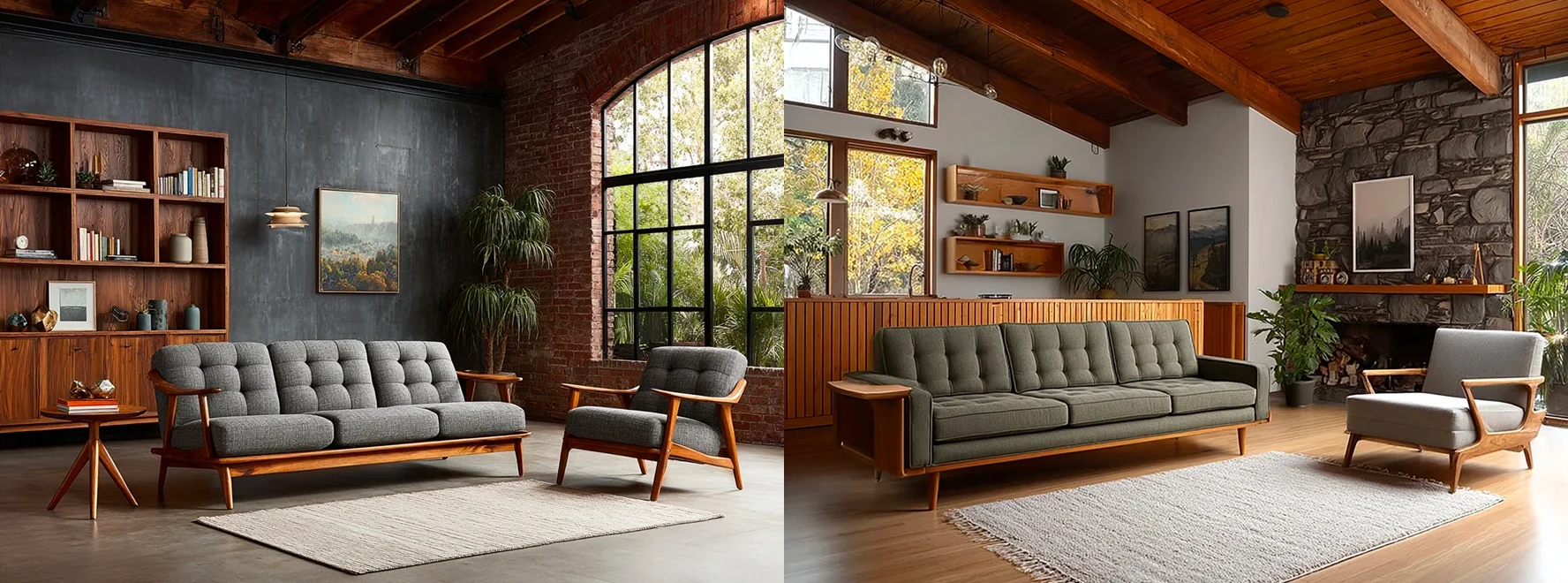 |
| Midjourney is clearly not in the same level when it comes to image editing, but it does create great text to image result, its image editing generation is more like a variation than editing. |
| Seedream |
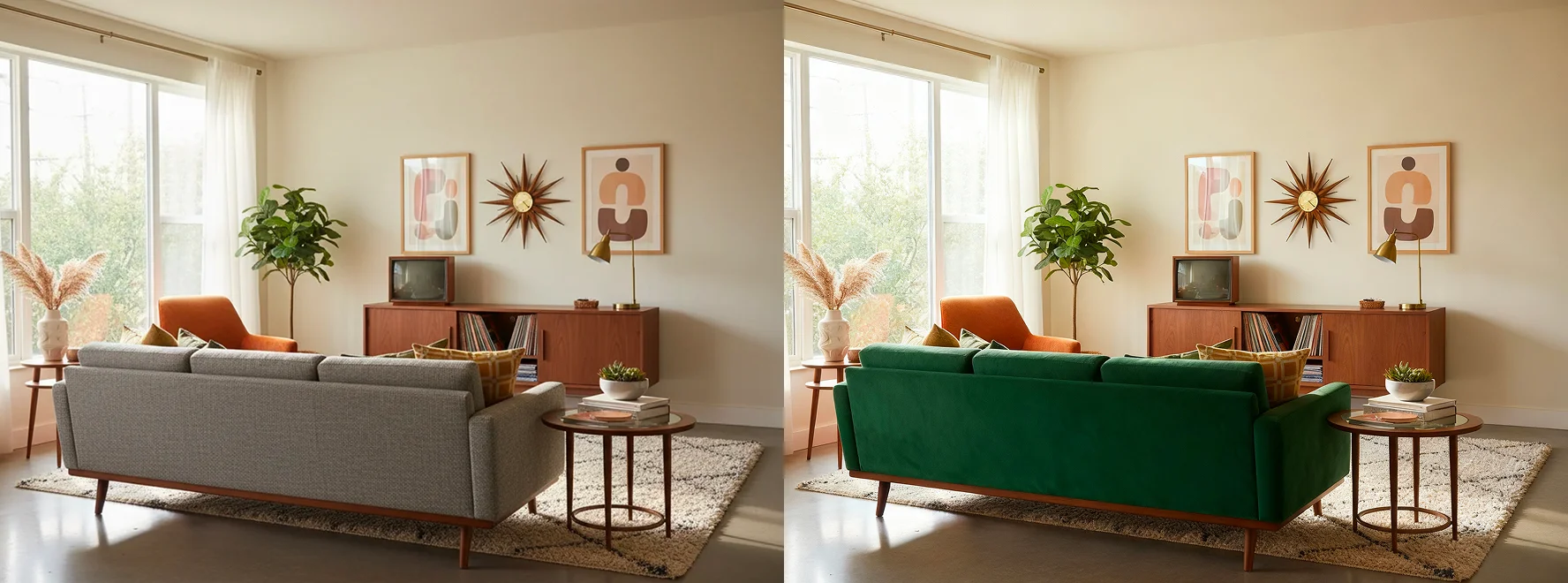 |
| Seedream seems to be very close to Nano Banana. Changes were targeted and precise. |
| Qwen |
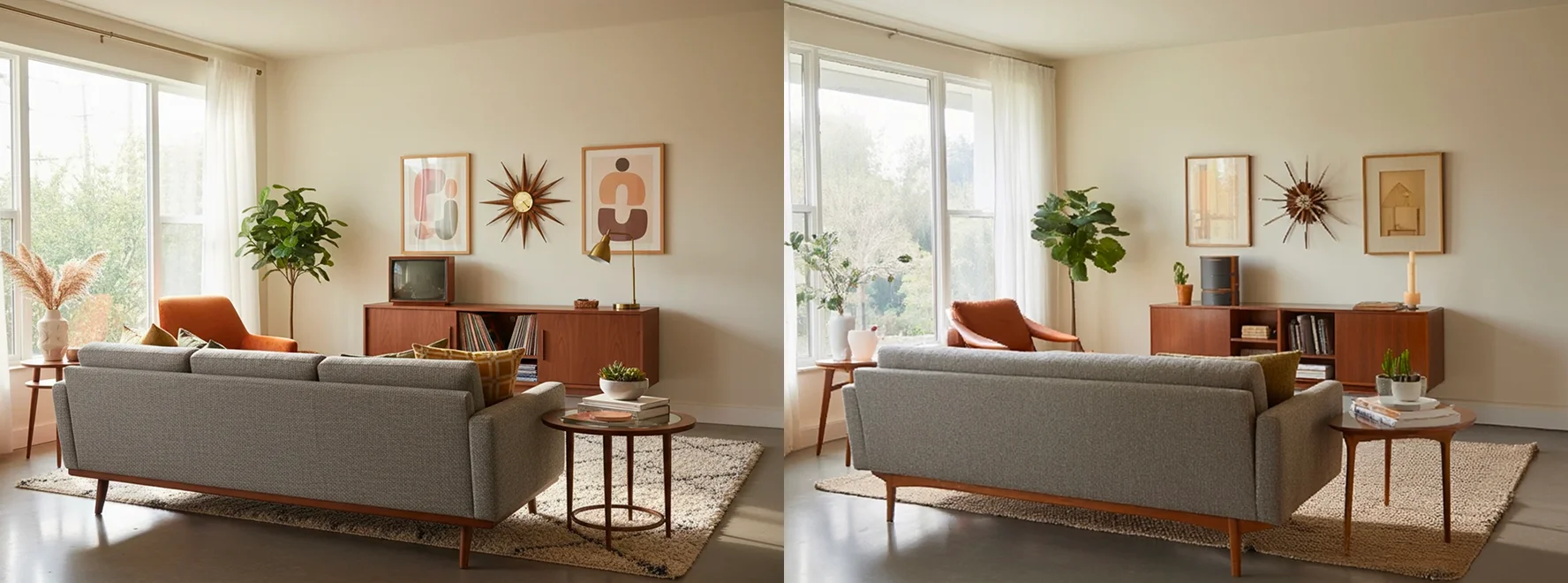 |
| Qwen is not quite excuting the request, as the sofa is modified but the colour was not changed. |
In summary, Nano Banana demonstrates the best overall result in both modes. All models show great text to image results. It very much depends on personal taste to distinguish the best from them.
🧩 2. Product Design Rendering
Goal: Assess material realism and detailed editing control.
| Product Rendering |
|---|
| GPT-4o |
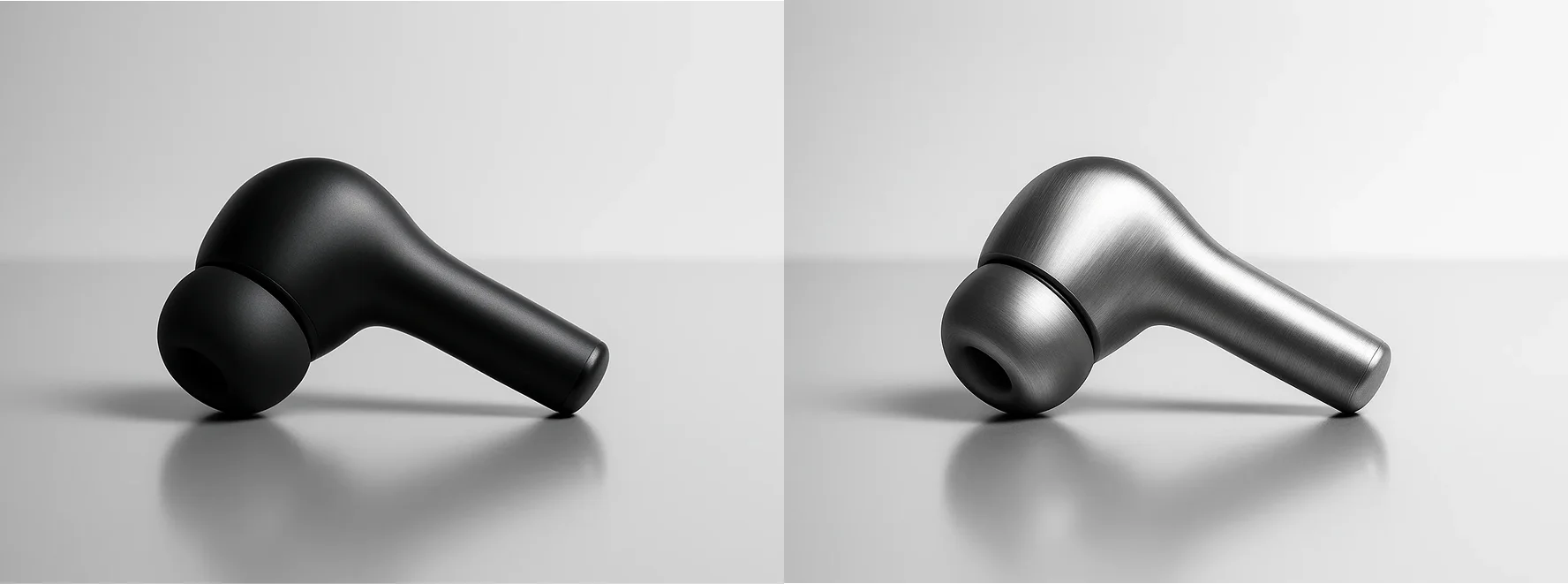 |
| Good rendering result for both text to image and image editing results. |
| Nano Banana |
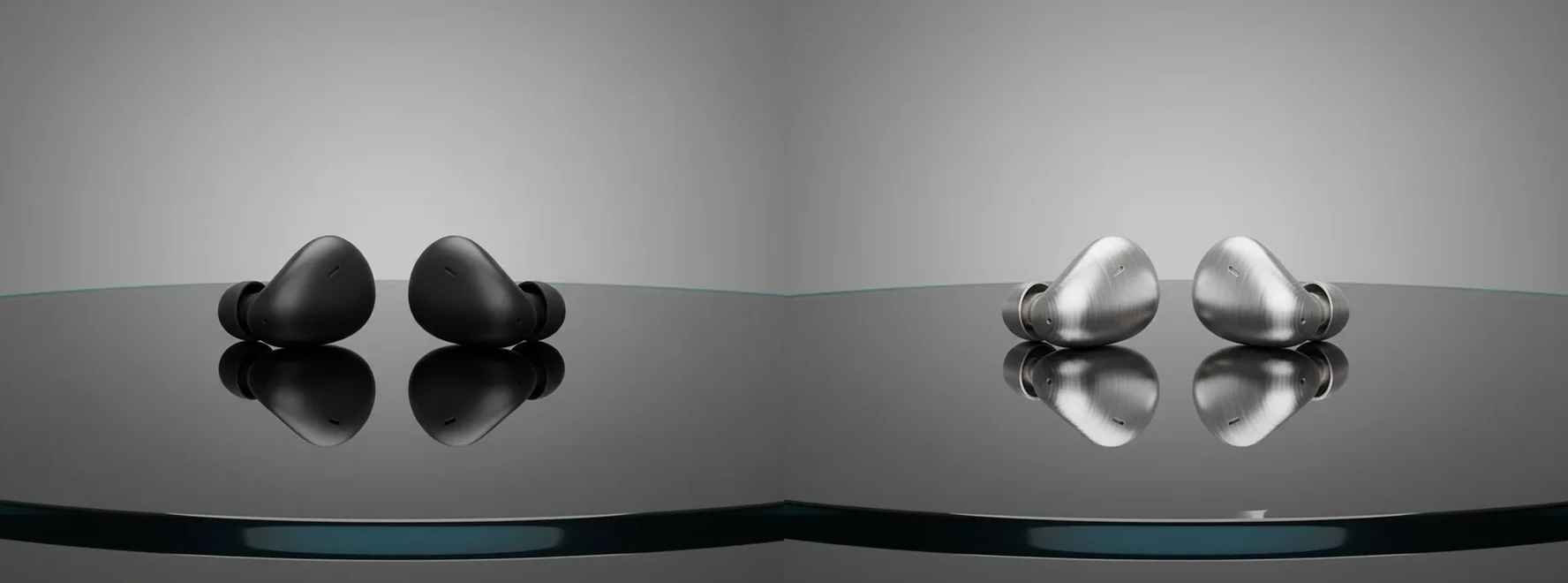 |
| Same quality compared to GPT4o, with a more accurate understanding of the prompt on the reflective surface. |
| Flux Kontext |
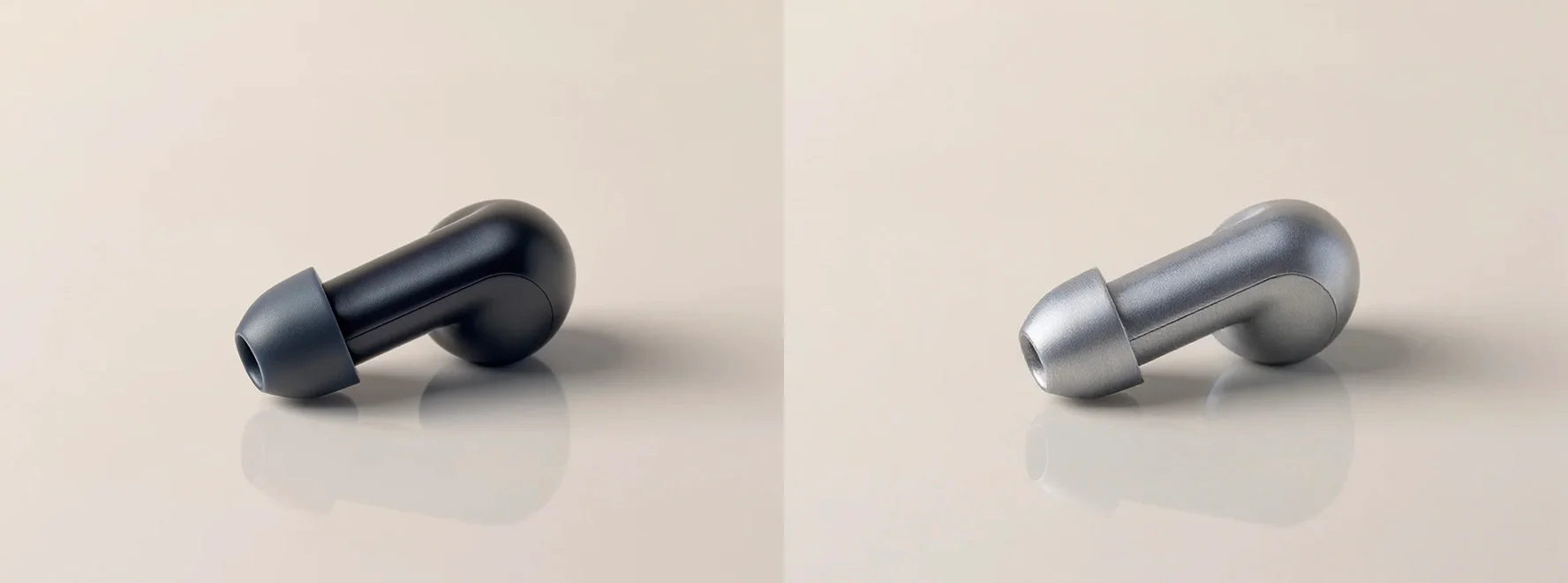 |
| Image editing is precise, but not very good at creating a reasonable 3D shape of the earbud. |
| MidJourney |
 |
| Similar to Flux Kontext, it struggles to create a reasonable 3D shape of the earbut, also fails at material editing, but the regenerated result did create a better geometry |
| Seedream |
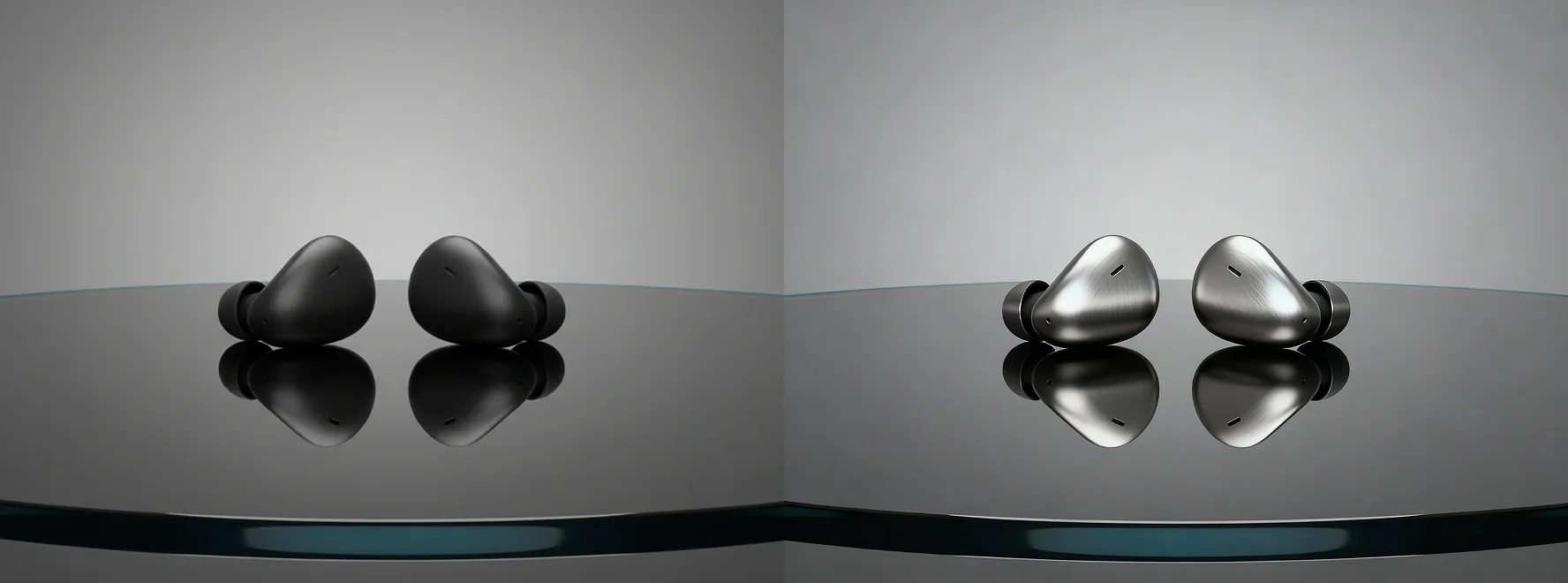 |
| Seedream seems to be very close to Nano Banana, maybe even a better job on the details. |
| Qwen |
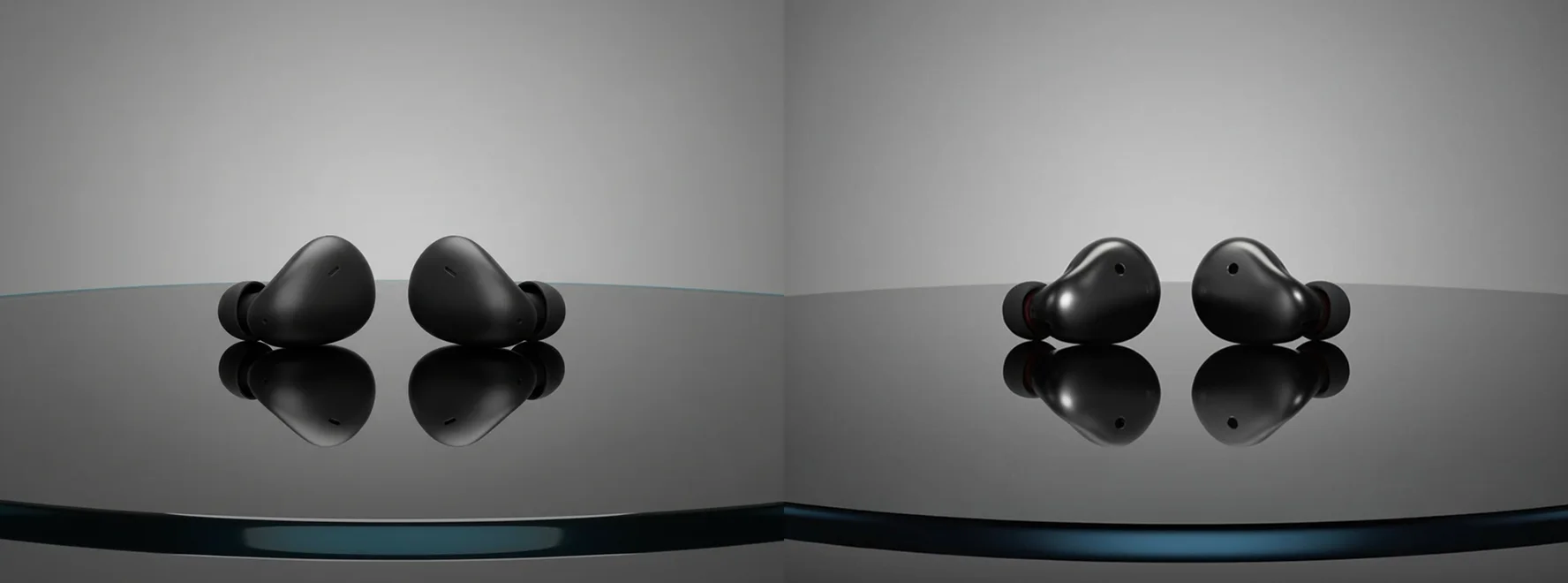 |
| Qwen fails it again like last time in the sofa editing. |
It is clear that Nano Banana is still the winner here, with GPT4o being very close, and Flux Kontext and Midjourney fails.
🧩 3. Character / Portrait Creative Editing
Goal: Evaluate realism and blending consistency during outfit replacement.
| Character |
|---|
| GPT-4o |
 |
| The only issue is with the yellowish tone, editing is very good, but it seems to be adding more yellow to the image |
| Nano Banana |
 |
| Still top on both text to image and image editing. Not only the outfit is changed, it even got the shadow updated according to the outfit change. |
| Flux Kontext |
 |
| Very nice text to image result with great colours, the image editing is close to perfect, but if you are aiming for precise control, it still changed the face and hair a bit compared to the input. |
| MidJourney |
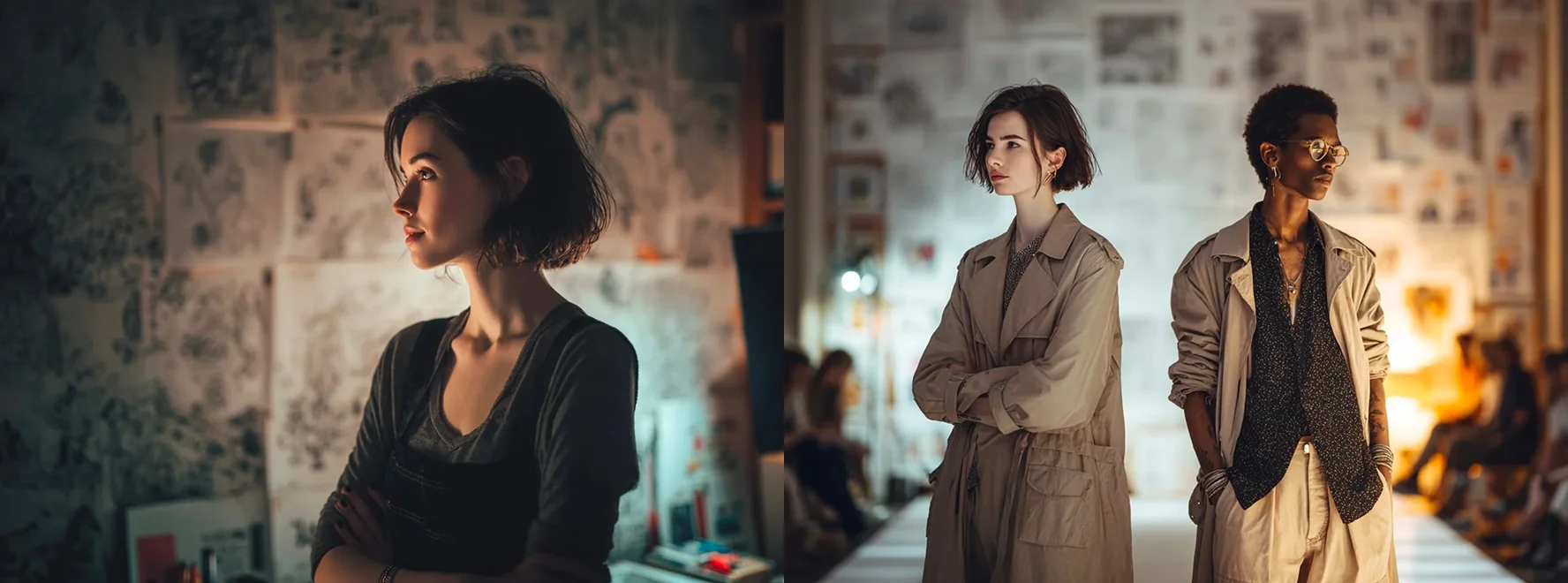 |
| Midjourney still fulfilled its promise on the artisitic look in text to image, but totally failed at precision editing. |
| Seedream |
 |
| Seedream kept the detail of the face angle, but wasn't quite good when it comes to the facial details, the rest seems to be satisfying |
| Qwen |
 |
| Qwen seems to have problem with both following the requests on the clothes replacement and also the character consistency. |
Similar to previous comparisions, Nano Banana is still at the top, with GPT4o and Flux Kontext following. If you like the artistic look, then Midjourney is still in competition, but it is clear that you will not be relying on Midjourney for any precision image editing.
🧩 4. Marketing / Visual Storytelling Composition
Goal: Test clarity and realism in ad-like layouts under precision edits.
| Advertisement |
|---|
| GPT-4o |
 |
| Very good on both mode, nothing much to comment on. |
| Nano Banana |
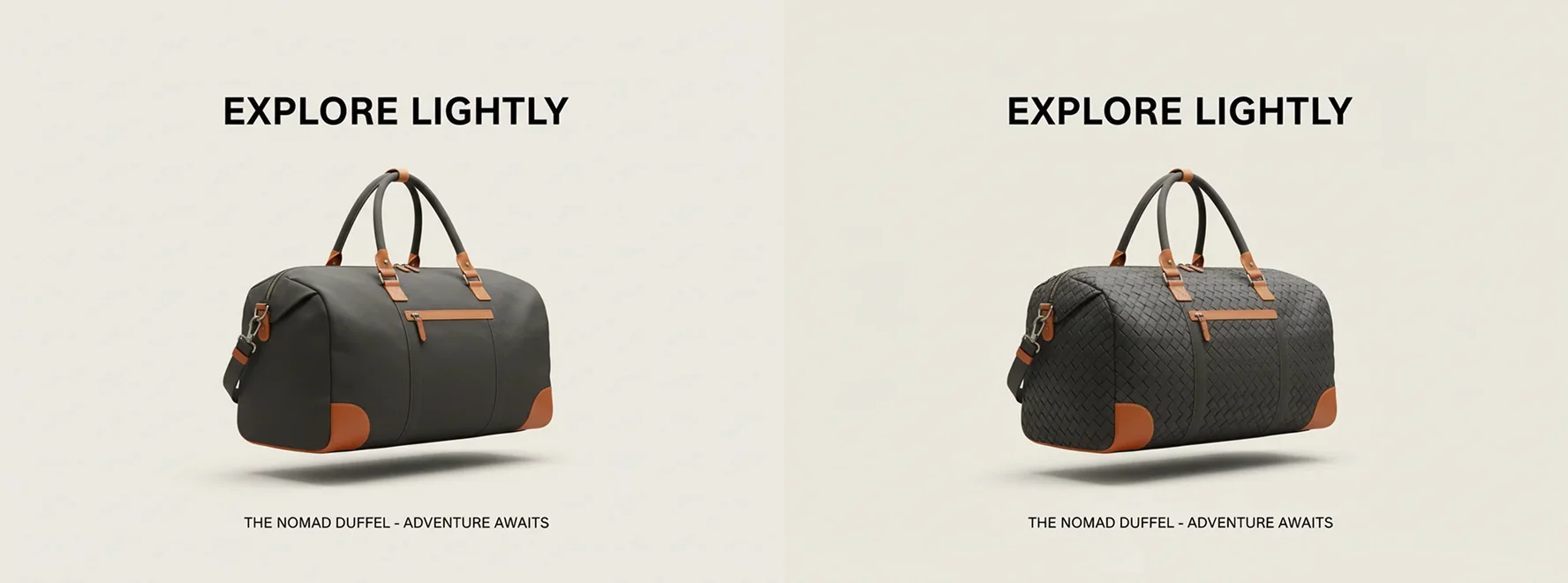 |
| Same as GPT4o, but it kepted the color consistent which is more accurate in comparison to GPT4o. |
| Flux Kontext |
 |
| Flux Kontext took the word "frame" too literal, exposing its core flaw in contrast to reasoning models like GPT4o and Nano Banana, also the material editing went too far by changing the belts too. |
| MidJourney |
 |
| Similar result like previous examples, it also failed to understand that we wanted a poster. |
| Seedream |
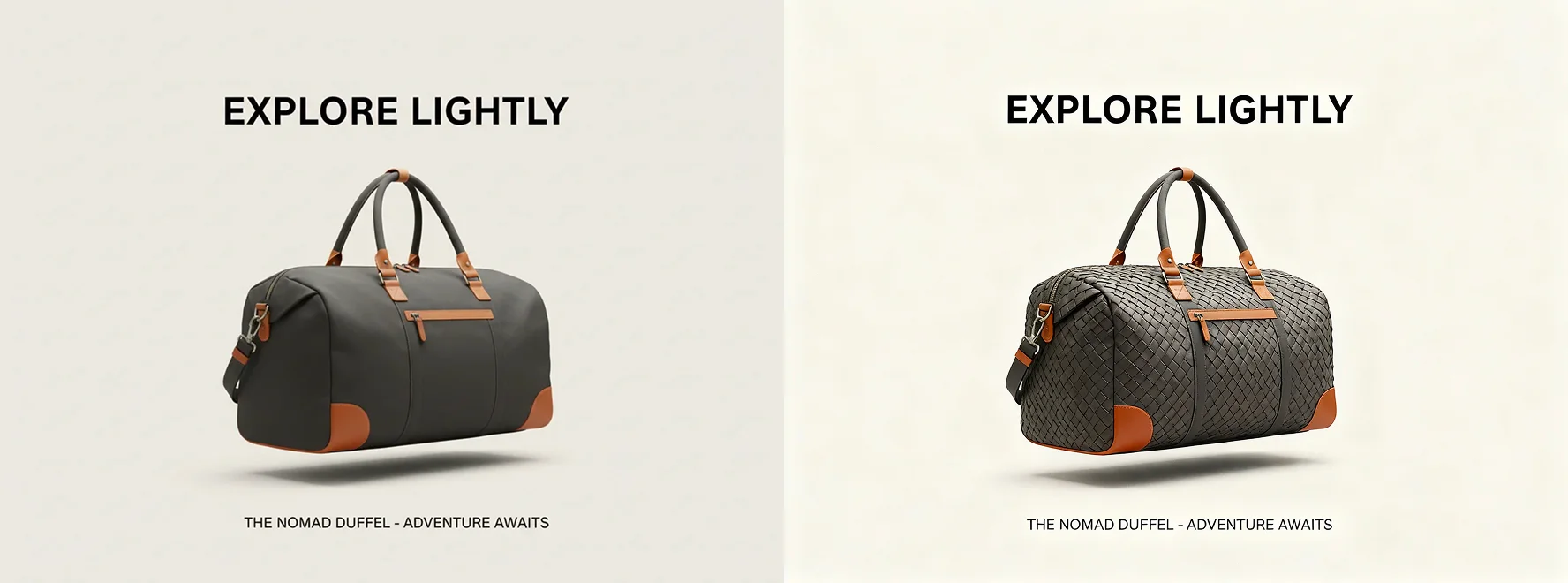 |
| Seedream is not bad on instruction following, but it is not as good as Nano Banana in terms of details. |
| Qwen |
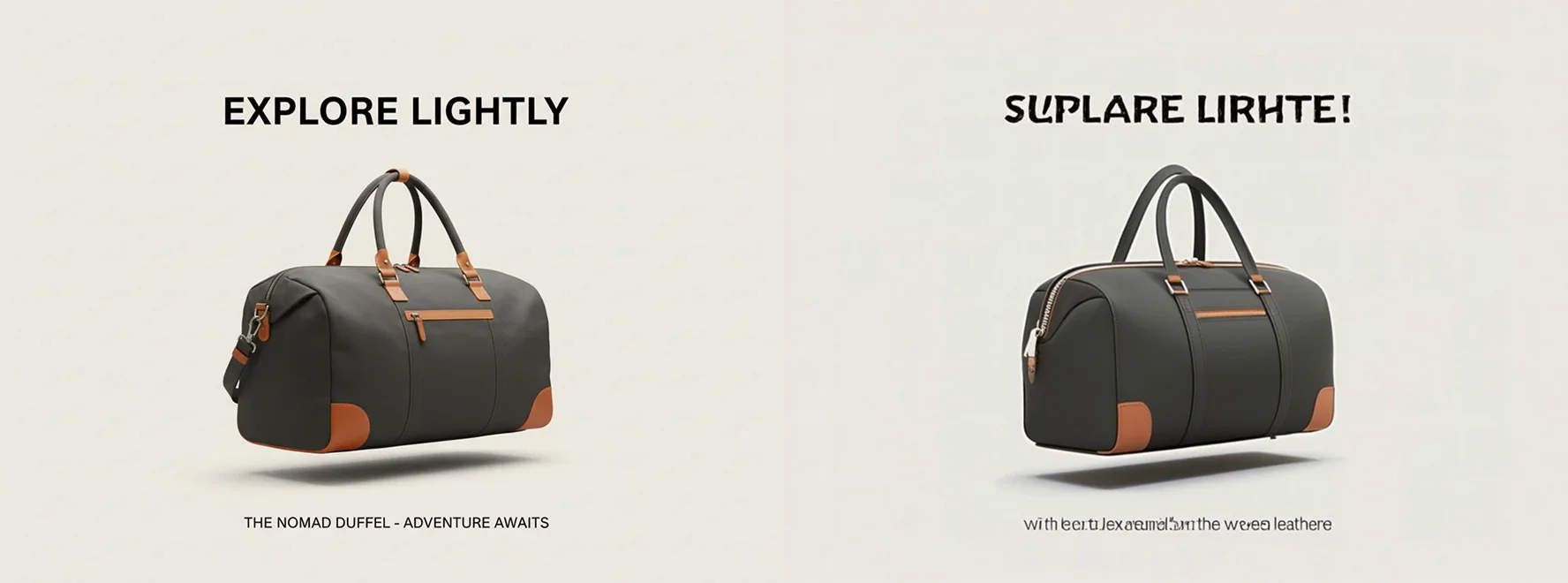 |
| Qwen fails it again with the texture, also it failed to render the texts properly. |
When it comes to more complex image setup, GPT4o and Nano Banana becomes a lot better on the understanding of prompts. Flux Kontext and Midjourney is clearly missing this advantage.
⚙️ Overall Comparison Summary
| Feature | GPT-4o | Nano Banana | Flux Kontext | MidJourney | Seedream | Qwen |
|---|---|---|---|---|---|---|
| Prompt Accuracy | High | Very High | High | Medium | High | Medium |
| Realism (Text to Image) | Good | Excellent | Excellent | Excellent | Excellent | Good |
| Precision Editing (Image to Image) | Good | Outstanding | Good | Weak | Very Good | Weak |
| Lighting & Composition Consistency | Moderate | Excellent | Good | Good | Good | Moderate |
| Ease of Control / Editing | Moderate | Smooth UI Integration (Banana Designer) | Moderate | Limited | Moderate | Limited |
| Ideal Use Case | General-purpose multimodal AI | Design, product visualization, precision editing | Contextual storytelling | Concept & art generation | Targeted editing, detail preservation | General image generation |
Conclusion:
Across both text to image and image to image tests, Nano Banana (Banana Designer's core model) demonstrates the most human-like understanding of spatial context and local modification.
It not only replaces or merges objects accurately but repaints them coherently within the environment — a key differentiator that enables professional-grade visual editing. Seedream comes close as a strong runner-up with excellent targeted editing capabilities, while GPT-4o and Flux Kontext offer solid performance for general use. MidJourney excels at artistic generation but lacks precision editing control, and Qwen shows potential but needs improvement in instruction following for editing tasks.
🏁 Takeaway
While GPT-4o, Flux Kontext, MidJourney, Seedream, and Qwen each offer unique strengths —
Nano Banana AI, within Banana Designer, stands out for precision, editability, and control.
Its intelligent editing engine doesn't stretch or copy pixels; it interprets composition and paints new, context-aware pixels — delivering realistic, production-ready visuals that align perfectly with designer workflows.
Try Nano Banana out in Banana Designer today for free now.